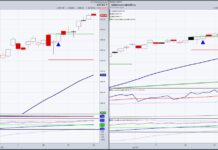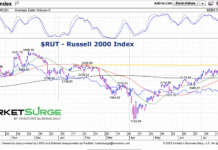Bearish Signals
There have been 14 bearish “Toy Barometers” since 1950 with the most recent being our “TOY Barometer” from 2014-2015, which will record its performance on January 19th 2016. Only 4 of these recorded 13 instances saw positive forward-looking twelve month returns for the S&P 500, a win rate of just 30.76%.
Average returns are decidedly negative, with the S&P 500 falling -7.38%. Median market returns are also negative, coming in at -7.93%. The 9 decliners have been a part of all of the worst bear markets the S&P 500 has experienced since 1950, from 1974, to 2002, to 2008.
The 14th bearish “TOY Barometer” occurred on January 19th in 2015 and measured -1.43%. Using average returns, this suggested a price target of 1,870.32 for the S&P 500 on January 19th of 2016. Given what’s transpired at the 1,870 price region the last two years, wouldn’t that be something? Also, calendar year performance for the S&P 500 Index tends to follow the “TOY Barometer”. Of the 13 bearish “TOY Barometers”, just four of them finished the calendar year in which they occurred in positive territory, a win rate of 30.76%. This doesn’t bode well for the remainder of 2015, the “TOY Barometer” suggests we’ll close below 2,058.90 on 12/31/2015.
How Might an Investor Use the “TOY Barometer”?
Wayne Whaley has been quoted as saying:
“If I could only make one trade a year, based upon one indicator, I would likely watch the price behavior over the two-month period between November 19 and January 19 and position my portfolio in alignment with the direction thus established.”
Investors have the opportunity to do the same! Make note of the S&P 500’s closing price on November 19th, then sit tight for two months and identify the S&P 500’s closing value on 1/19/2016. You’ll then measure the index’s price only market return to identify the “TOY Barometer” signal and can then consider making a tactical adjustment to your portfolio’s asset allocation. For example, a bullish “TOY Barometer” may lead an investor to take an incremental step in overweighting stocks that are designed to track the S&P 500, such as iShares S&P500 Index Fund, ticker symbol IVV.
Assuming average returns following bullish “TOY Barometers”, a 10% increase toward a security like IVV could generate an additional 1.67% of forward-looking twelve-month market returns. Alternatively, a bearish “TOY Barometer” may lead an investor to take a step away from equities in order to reduce portfolio drawdown in the event the S&P 500 does indeed decline on a forward-looking basis. A 10% reduction away from a security like IVV following a bearish “TOY Barometer” could help someone save 0.73% in portfolio drawdown over the forward twelve months. Given the “TOY Barometer’s” historical success, these small tactical adjustments can yield big results in both maximizing up-market capture and minimizing down-market capture.
With today being November 19th, I’ll be paying close attention to this “TOY Story”.
To learn more about Wayne Whaley and to subscribe to his newsletter you can visit his website. Thanks for reading.
Twitter: @SJD10304
The author has positions in S&P 500 related securities at the time of publication. Any opinions expressed herein are solely those of the author, and do not in any way represent the views or opinions of any other person or entity.









